Insects are an instinctive menu for many birds and other creatures. Poultry birds, for instance, are seen pecking at the ground to pick worms or other such things. Cicadas, aphids, scale insects, worms, crickets, ants, and many other such creatures provide a treat for many birds.
The poultry industry has enlarged increasingly in developing countries in the last twenty years. They tend to feed such insects as a substitute for other food items.
Insects are rich in a substance known as chitin (a form of carbohydrate) that has a profound influence on the immune system of birds. By offering insects as part of poultry diets, a grower could avoid giving them antibiotics.
So then, can chickens eat grasshoppers or locusts?
Table of Contents
Can Chickens Eat Grasshoppers?
Chickens love gobbling up grasshoppers and locusts.
Some people tend to confuse crickets with grasshoppers as they belong to the same family, however, there is a slight physical difference between them. There isn’t any concern about chickens eating grasshoppers or crickets, though, because both of them hold the same nutritional value.
Locusts also belong to the same order as grasshoppers, so they are also a great source of food for chickens.
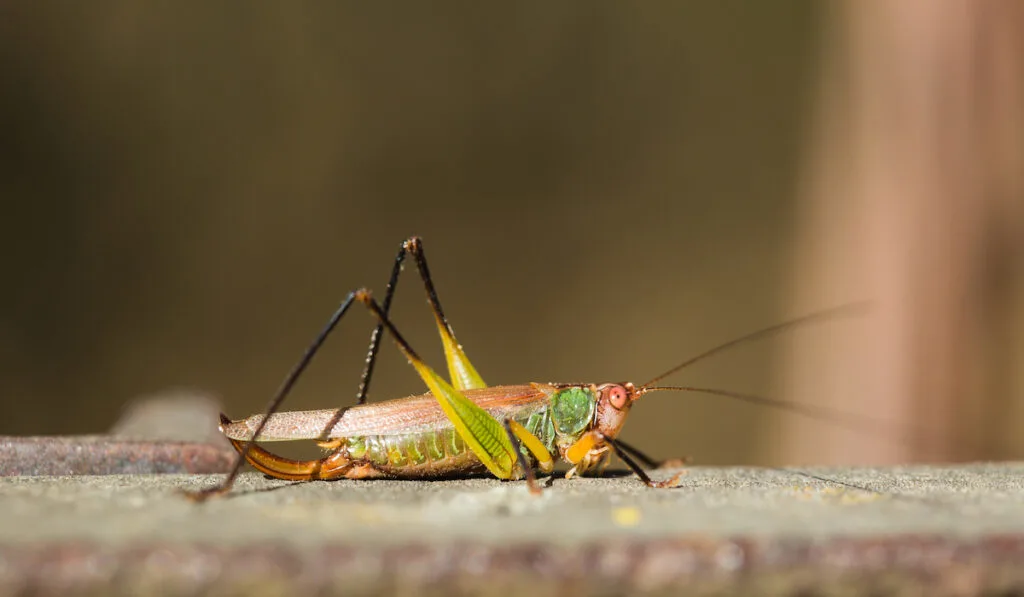
How Beneficial Are Grasshoppers and Locusts for Chickens?
The poultry industry feeds fish meal to chickens as part of the protein ration. However, chicken owners may not be able to get hold of this food ingredient, so they can supplement with locusts and grasshoppers instead. These insects are a great alternative for chickens.
Locusts could be damaging for your crops but, they are a favorite thing of chickens to devour. Following are some of the factors for which grasshoppers and locusts are great for chickens.
Better Chicken Growth
The amino acids in grasshoppers are a huge boost for chickens especially, lysine, methionine, and cysteine. Methionine is a component of amino acids that plays a significant role in the growth of birds.
Amino acid diets help chickens to experience enhanced food conversion, produce good quality breast meat, and achieve a target weight. Methionine is a great source of food for broiler chickens and also a precursor of cystine.
The Coloration of Egg Yolk
Carotenoids exist in a great amount in grasshoppers. Carotenoids are a great source of vitamin A and contribute to the color and quality of the egg yolk.
Carotenoids are also great for immune response and the breeding process in birds.
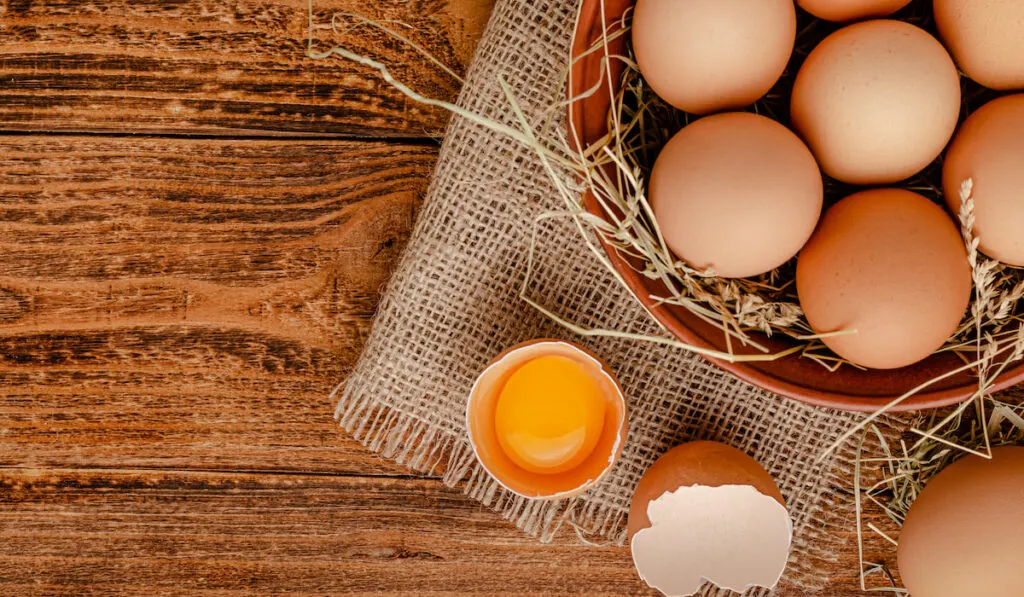
Improves Egg Quality
Egg quality is also enhanced with the feeding of these insects. But is there a concern with feeding only locusts and grasshoppers in regard to egg quality?
According to many studies, there was minor or no difference in the egg formation, egg weight, egg shape index, albumen height, and eggshell thickness for chickens fed only grasshoppers and locusts.
Locusts and grasshoppers can have an economic impact on agriculture. The poultry industry can realize a cost reduction in bird food prices and benefit the local farmers if trapped insects are used as feed ingredients.
Egg Laying Rate
Fish meal and grasshoppers are almost equivalent in nutritional value. There was not an enormous difference between the egg-laying rates after alternating fish meal with grasshoppers. One does not need to be worried about the egg-laying rate if their chickens feed only on grasshoppers or locusts.
Metabolizable energy, crude protein, lysine, methionine, and crude fiber are the main factors that affect the egg-laying rate, and replacing the fish meal with grasshopper does not bring that much of a difference in the rate of these factors. So, your chickens can enjoy grasshoppers and locusts as much as they want.
Formation of Egg Shells
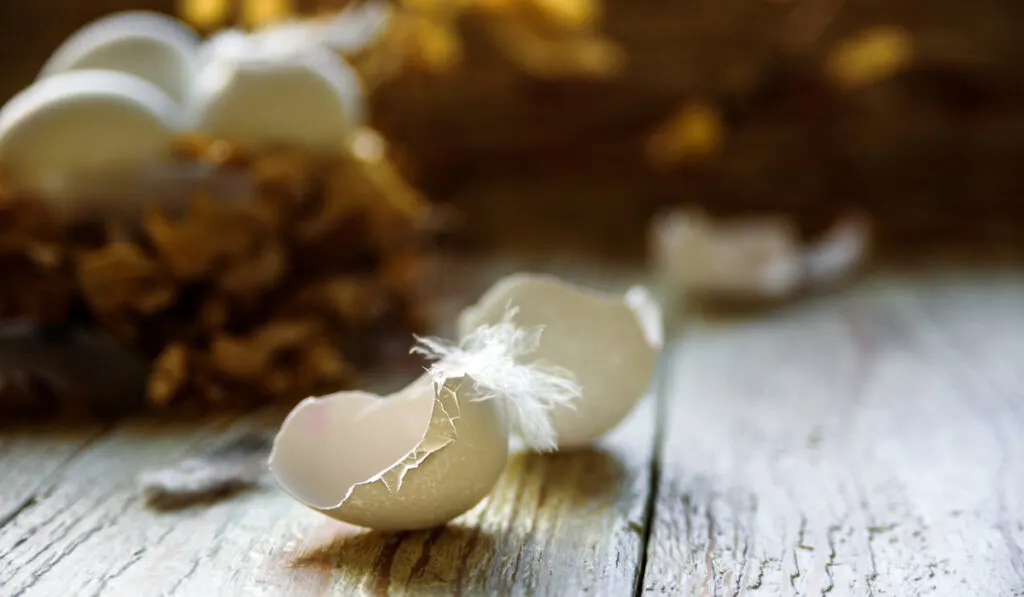
Many nutrients help in the formation of the eggshell. When chickens get nutrients from diverse sources, chitin in grasshoppers plays a significant role in aiding the absorption of these nutrients.
Calcium, for instance, contributes a great deal to making the eggshell. Chitin helps them in processing the calcium for eggshell formation.
Can Chicks Eat Grasshoppers and Locusts?
Chicks need more nutritional value than adult chickens. It is said that chicks can also devour insects along with their mothers. However, try not to give baby chicks every kind of food right after they are hatched.
One must keep the following nutrients in mind while selecting food for chicks:
Protein
Chicks require 18%-20% protein in their diet. Protein builds muscle and boosts strength and bone integrity during the important preliminary stages of development.
When they reach the age of 19 weeks, decrease their protein level to 16%.
Vitamins
Every bird needs fat and water-soluble vitamins. Chickens need all vitamins excluding vitamin C. Vitamin A, D, E, and K, niacin, folic acid, biotin, thiamine, and riboflavin are necessary nutrients for poultry.
Minerals
Minerals are instrumental in the growth of young animals. Chicks need a diet full of calcium, phosphorous, magnesium, iron, and copper. Be sure to choose a diet that is rich in minerals.
Once again, the chitin in grasshoppers also helps chicks soak up all the minerals.
Grains
Baby chicks love feeding on grains. They like eating wheat, corn, and soybeans. These grains and beans are a reliable source of vitamins, proteins, and oils. All these nutrients play a key role in boosting up their energy.
Fats
Chickens tend to gain fats through linoleic acid. Fatty acids disintegrate vitamins and minerals permitting them to be used readily. Locusts provide a lot of fatty acids and minerals to chickens. Many countries use locusts to get fatty acids.
Grasshoppers and locusts not only provide nutrients but also aid in utilizing them properly.
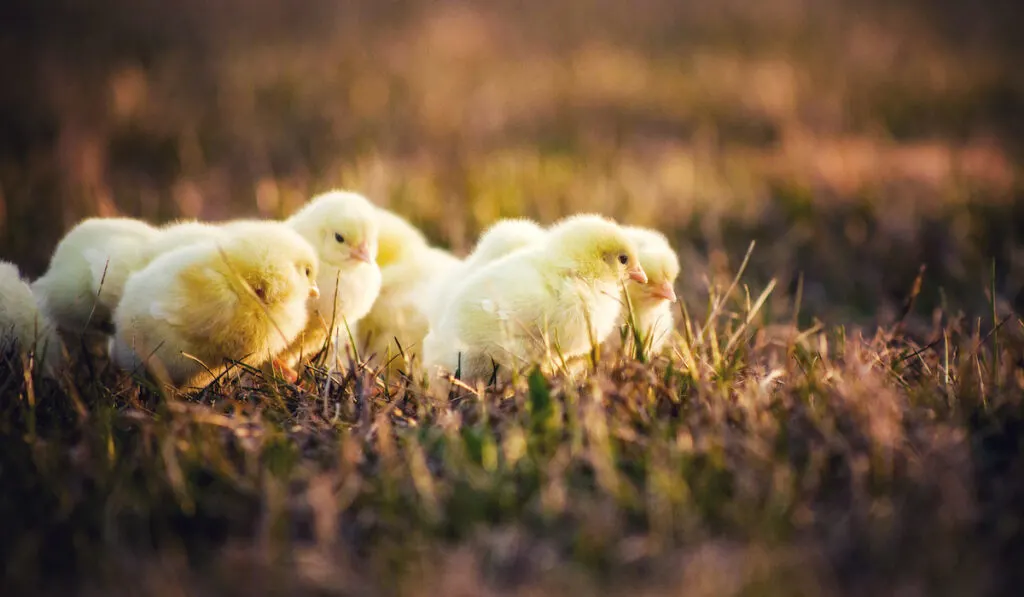
7 Farm Birds That Love to Eat Grasshoppers and Locusts
Following are some of the farm birds that love eating locusts and grasshoppers.
1. Geese
Geese are large birds that need more nutrients than chickens. They can often be seen pecking grass in open areas. They are also interested in eating snails and other insects.
Their summer treats include grasshoppers or locusts and some other insects like earthworms, etc.
2. Ducks
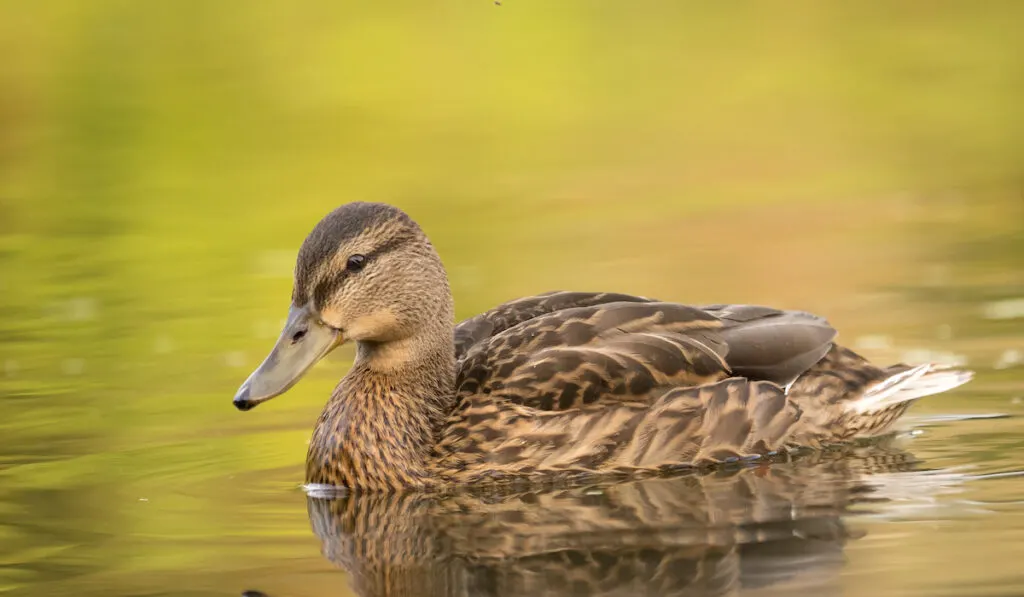
Ducks are pleasant creatures that are often kept as pets. They do not need as much care as other poultry.
Ducks are very interested in feasting on grasshoppers and locusts. According to research, ducks could be used for controlling locust swarms. A chicken can only eat seventy locusts in a day, but a duck can eat three times more than a chicken.
Ducks need less attention than chickens. They can grow, breed, and become stronger by devouring any insects like snails, grubs, grasshoppers, and many others. Ducks provide exceptional quality meat and eggs by feeding on locusts and grasshoppers.
3. Turkeys
Turkeys are large birds with a beautiful fan-like tail, pink legs, and often have bars on their wings.
They love eating nuts. During spring, they like having vegetation and in fall they tend to eat fruits and berries. Like other poultry, they also love eating insects like snails, slugs, locusts, and grasshoppers whenever they can.
4. Quail
Quails are beautiful birds that are found in assorted colors such as brown, blue, black, and gray. Quails love eating grass, seeds, grains, etc. They also like to treat themselves with insects like grasshoppers, locusts, and many other bugs.
Those who would want to increase the quail community on their land should plant vegetation that attracts insects. The more insects, the more quail will be lured into your fields.
5. Guinea Fowl
Guinea fowls are rounded birds with naked necks. They have beautiful feathers with spots on them.
Guinea fowls are omnivores, and they will eat almost any plant and animal material. They love eating fruits like watermelon, apples, oranges, and berries, along with seeds, insects, small birds and reptiles.
Guinea fowl need to have a high amount of protein, so they look for insects such as grasshoppers, locusts, beetles, and bugs regularly.
6. Partridges
Partridges are pheasant-like birds that also love eating insects. They tend to eat grasshoppers, locusts, beetles, and bugs to fulfill their requirement of protein as they browse in forest undergrowth.
7. Emus
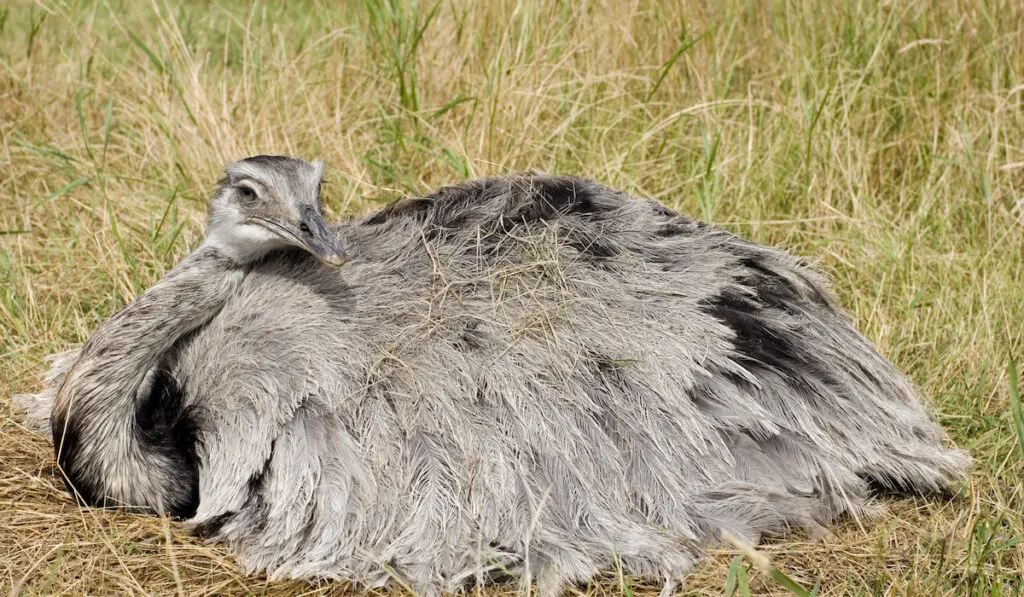
Emus are big, brown birds with shaggy, flightless feathers. They like to devour insects only when they are easily available to them.
Conclusion
The scheme of feeding birds with insect protein is now becoming popular. Along with this, industries that can harvest them in excessive amounts are growing as well. Insects, especially grasshoppers and locusts, are a viable alternative source of protein for chicken diets.
You will also find that your free-range chickens devour grasshoppers and locusts when they are plentiful. Enjoy the beneficial effects your chickens get from eating these damaging agricultural pests.
